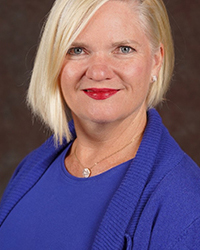
Deena Ruth Bell, ASLA
City of Coral Gables and Bell Landscape Architecture, Coral Gables, FL
Nomination in Leadership/Management by the Florida Chapter
Deena Bell’s value as a community leader and her impact on the city of Coral Gables, Florida, and beyond, is unparallelled and can be seen on the ground with her efforts to establish new practices that ensure sustainable tree and plant growth. She directed the removal of 370,000 cubic yards of debris after Hurricane Irma toppled over 1,000 street trees. She established a tree debris recycling station, which has allowed the city to use only their self-produced mulch in 400 parks and green spaces. Her team developed a perpetual tree succession project, which calls for planting over 1,000 new native and resilient species suitable for the intricate infrastructure of the urban forest. Deena was appointed liaison to the Landscape Beautification Advisory Board which oversees improvement of over 60 parks and 400 green spaces that Deena and her staff maintain. This board has been effective in proposing edits to legislation to encourage more diversity in tree species and the use of native plants to reduce the volume of fertilizer and pesticides running off to local bodies of water. They got the county to ban fertilizers during the summer rainy season in order to reduce the frequency of algae blooms that harm the local aquatic environment. killing coral reefs and hurting the Florida tourism economy. By prioritizing green infrastructure and trees on a broad community scale, Deena is demonstrating courage and strong will to lead the community to a healthier future and increasing the visibility and understanding of the role of landscape architects in creating resilient communities.
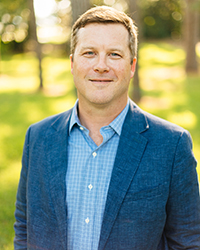
W. Shannon Blakeman, ASLA
CARBO Landscape Architecture, Baton Rouge, LA
Nomination in Works by the Louisiana Chapter
Shannon Blakeman’s projects are more than just landscapes—they are social and ecological interventions that enhance the lives of the communities they serve. Through a deep understanding of place, a commitment to community engagement, and a focus on sustainable design principles, he has created a legacy of vibrant, resilient, and equitable communities. His work consistently demonstrates a unique ability to integrate ecological knowledge, urban conditions, and a compelling aesthetic sense. He fosters collaborative environments, inspires colleagues, and mentors emerging talent, and is dedicated to incorporating site history, restoring natural patterns, and using sustainable materials. With the Atchafalaya Water Heritage Trail in the Atchafalaya Swamp, America’s largest water basin, he demonstrated his ability to translate complex ecological and cultural information into an engaging public experience. Through thoughtful curation of information and a focus on accessible design, this project successfully engages thousands of visitors, promoting a deeper understanding of the region’s unique hydrology, its cultural heritage, and its impact on the landscape. His environmental stewardship is also found in the Mirabeau Water Garden Project in New Orleans, a multi-phase award-winning model project for Resilient New Orleans, which transforms a 25-acre open site into a neighborhood recreational and educational amenity and reduces the risk of flooding for the adjacent residents. A third example of Shannon’s capacity to integrate site history, community engagement, ecological function and human needs is the award-winning City Park project for Gretna, Louisiana. This transformative project was conceived as one of 36 pilot projects in Louisiana’s Strategic Adaptations for Future Environments (LA SAFE) planning initiative, aimed at bolstering resilience in the state’s most flood-prone areas as both a critical adaptation strategy and as a beacon of nature-based best practices for the wider region.

David Yuezhong Chen, ASLA
ECOLAND Planning and Design Corporation, Beijing, PRC
Nomination in Works by the Executive Committee of the Council of Fellows
For over 36 years, David Chen has dedicated his career to promoting ecological protection and restoration during the urbanization planning and design process. He has consistently explored methods to counteract the deterioration of urban ecologies, advocating for sustainable development and environmental resilience. As the founding principal of ECOLAND, David's extensive portfolio of over 1,000 projects, both domestic and international, showcases his ability to integrate natural landscapes into urban environments, creating spaces that are both functional and aesthetically pleasing. His numerous accolades, including the ASLA Professional Awards and the IFLA Award, are a testament to his exceptional contributions. Among his award-winning projects is the Suining South Riverfront Park in Suining City, China, which addressed the challenges posed by the city's concrete bulkhead riverbanks, which hindered ecological function and degraded the local environment. The project converted a stark levee into a vibrant, sustainable park that integrates terraced connections with the city and fosters interaction with the river edge. The Beijing Wangjing SOHO Urban Parks feature three distinctive garden spaces designed to complement the iconic curvilinear SOHO buildings. Echoing the architectural forms, the landscape integrates organic pathways, lush plantings, and dynamic water features to create a seamless connection between nature and the built environment. The Huangyan Waterfront Riverwalk project presents a sustainable vision that revitalizes degraded ecological areas while creating a coherent greenway system of circular waterfront connections for communities. This initiative focused on restoring water quality, rehabilitating the water's edge, and fostering green infrastructure elements to mitigate the impacts of climate change. David has also made significant academic contributions, authoring and coauthoring several important books and serving as a visiting professor at multiple institutions.
 Wm. Christopher Cline, ASLA
Wm. Christopher Cline, ASLA
Confluence, Kansas City, MO
Nomination in Leadership/Management by the Prairie Gateway Chapter
From Chris Cline’s early work in land development to leadership in large-scale transportation, redevelopment, and business strategy, he has advanced the role of landscape architects as leaders in shaping cities, infrastructure, and public policy. Throughout his career, he has expanded the profession’s influence by leading complex, multidisciplinary initiatives that integrate landscape architecture into transportation networks, urban revitalization, and sustainability policy—areas historically dominated by engineers and planners. Chris began his career working in land development. From there he joined HNTB’s Urban Design and Planning Group, where he led large-scale transportation projects, including the design of light-rail park-and-ride stations to support future mixed-use, transit-oriented development in Denver. He returned to development in 2005 and then in 2008, Chris joined Confluence. His leadership in marketing and business development strengthened Confluence’s market position, forged strategic partnerships, and secured high-profile projects such as the Falls Park Conceptual Master Plan and the Imagine Downtown Kansas City 2030 Strategic Plan. He advanced innovative planning frameworks, redefined public spaces, and set new benchmarks for excellence. Chris has personally led projects that have earned 107 awards, including eight international and national honors, 69 ASLA regional and state awards, and 22 additional accolades from professional organizations. Chris served as Prairie Gateway Chapter president from 2017 to 2019, where he revitalized the organization through leadership restructuring and a strategic membership drive. His active involvement in the Urban Land Institute has helped the development community understand the value of landscape architects and their essential role in creating sustainable resilient communities. By bridging disciplines and leading collaborative initiatives, Chris has positioned landscape architecture as a driving force in infrastructure, urban polity, and sustainable development.
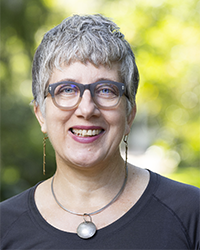
Sally E. Coyle, ASLA
Coyle & Caron, Orlando, FL
Nomination in Works by the Florida Chapter
For more than three decades, Sally Coyle’s stunning immersive landscapes have played a critical role in environmental education and species conservation at zoos, aquariums, and botanical gardens. By connecting people to plants and animals through observation, discovery, hands-on learning, and play, millions of visitors experience the joy and wonder these worlds provide. Sally’s landscapes not only connect visitors to conservation stories but also enrich the lives of animals by fostering natural behavior and creating spaces for top-notch care and research. At the Lisbon Oceanarium, Sally led the design for the terrestrial areas of the four ocean habitats shaping the building envelope from the inside out to ensure powerful visitor experiences and ideal conditions for live species to thrive. Working with the architects, she designed close-up views and movement to reinforce the project’s underlying concept of the interconnectedness of all marine life. It has sustained its success as one of Europe’s most popular destinations since 1998. The Smithsonian National Zoo’s Asia Trail, where Sally led the design for eleven habitats for seven species, is widely considered a seminal work in landscape-immersion-based zoological design. Her integrated approach to habitat design and husbandry for enrichment and training laid the groundwork for increased research and set the standard for future exhibits. Sally’s revitalizing design for the Majeed Discovery Garden at Florida Botanical Gardens includes beautifully designed and crafted play experiences and outdoor learning spaces inspired by both native ecosystems and exotic flora. A new stormwater pond is integrated with a large littoral shelf for emergent species as well as bank restoration of the creek.
 Matthew Cunningham, ASLA
Matthew Cunningham, ASLA
Matthew Cunningham Landscape Design, Stoneham, MA
Nomination in Works by the Boston Chapter
Matthew Cunningham’s award-winning, plant-centric projects embody a rigorous commitment to regionalism, environmental stewardship, and climate adaptation. His work inspires new ways of living and learning by fostering biodiversity, promoting meaningful connections with the land, and drawing people from indoors out. With more than 1,600 acres of built works, Matthew’s gardens aim to restore fragmented ecologies. They replace invasive species with drought-and deluge-resistant native plants that sequester carbon, nourish pollinators, reduce maintenance, and integrate practical, site-specific stormwater management solutions. At Le Petit Chalet in Southwest Harbor, Maine, a durable, context-sensitive design restored the hurricane-damaged historic property. New landforms and stormwater management strategies ensure swift drainage while enhancing the property’s natural absorption patterns with native plant colonies stabilizing soils and regenerating habitat. In “Suburban Jungle” in Brookline, Massachusetts, with no site soil and limited resources, MCLD transformed the modest north-facing parcel from a stripped lot into a lush, layered ecosystem, merging architecture and nature through the use of pioneer species from New England’s successional plant communities. At Berkshire Ridge in Great Barrington, Massachusetts, a year-round retreat perched on a wooded mountain slope, the designers focused on blurring indoor-outdoor boundaries and blending modern architecture with the rugged landscape. The design integrates the home into the mountainside through reclaimed granite terraces, while roof runoff and stormwater are directed into bioretention basins that slowly recharge the surrounding watershed. Through teaching at Harvard, lectures, interviews, and social media, and his research and experimentation farm, MCLD Land Lab, Matthew drives crucial conversations that highlight how a constellation of landscapes can add up to address global challenges.
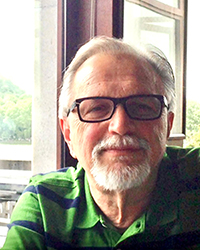
Stephen Drown, ASLA
Professor Emeritus, University of Idaho, Moscow, ID
Nomination in Leadership/Management by the Idaho/Montana Chapter
For over four decades, Stephen Drown’s dedication to education has been nothing short of exceptional. His steadfast leadership, joy of teaching, and significant initiatives have earned him a legacy that transcends academic and professional practice and created new opportunities to expand the theoretical foundation of the design and planning professions. An educator, mentor, and global collaborator, Stephen helped inform the practices and perspectives of students and faculty at the Ohio State University (1975-1994), the University of Idaho (1994-2017), and Jiangsu University (2018-present). Stephen is an inspirational figure, sharing his deep knowledge but also transferring interest and enthusiasm for the profession, and creating the conditions for students and the field as a whole to prosper. At Ohio State, he initiated service-learning opportunities that allowed students to experience both the transformative value and real-world challenges of landscape architecture as they beautified interstate corridors and planned and designed the acclaimed Chadwick Arboretum. Stephen’s leadership as Department Chair at The University of Idaho led to the expansion of academic offerings and opportunities available to students at this crucial land grant institution. He created a regional energy and enthusiasm for the profession and pursued innovative partnerships to ensure the department had funding, accreditation, and rigor, and led the effort to create an MSLA degree. For 15 years Stephen co-led international study abroad programs in France, Italy, and China, to help students graduate with an extensive, broad worldview. Stephen’s unique ability to ignite creative potential, bridge visionary ideas with real world applications, and instill a deep sense of purpose has left an enduring legacy in both professional practice and academia.
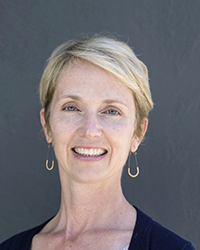
Liz Einwiller, ASLA
EinwillerKuehl Landscape Architecture, Oakland, CA
Nomination in Works by the Northern California Chapter
Throughout her 30 years of practice, Liz Einwiller has demonstrated extraordinary design talent along with an unmatched ability to convene people with her enthusiasm, her deep knowledge, and her visionary ideas. And along the way inspire her clients and others to become enthusiastic stewards of the natural world and landscape architecture. Liz joined PWP Landscape Architecture in 1998 and grew quickly as a leader with a focus on construction documentation, working on complex projects at the leading edge of the profession. Since co-founding EinwillerKuehl Landscape Architecture in 2012 with longtime collaborator Sarah Kuehl, Liz has developed gardens that showcase the natural world in ways defined both by the client and the site’s potential. At Uptown Station the renovation of a historic building in downtown Oakland included a series of large rooftop terraces requiring a strategy for planting in thin soil profiles. Liz led coordination with the structural engineer, the waterproofing consultant, the contractor, and a meadow expert to create outdoor gathering spaces and contemplative strolling paths within a seasonal flowering meadow. In Calistoga, California, the project design reset three existing structures in a new landscape that uses water wisely, with a linear wall connecting all areas of the garden. Planting was selected to create a framework and seasonal interest and color. A former brownfield site, the Pleasant Hill California library landscape is a teaching example of a restored local ecology using low water native plants as well as a trail head for the natural world. The design is an integrated, legible, and cohesive architectural, landscape, and infrastructure solution. Liz’s masterful work on the planting design has become a model project for using low water native plants.

Ann English, ASLA
Department of Environmental Protection, Montgomery County, MD
Nomination in Knowledge by the Potomac Chapter
Ann English has focused on sustainability and resilience of local, regional, and national landscapes for over thirty-five years. Long before the term “green Infrastructure” was coined, Ann was developing ecological methodologies that highlight the practice of landscape architecture as a field centered on the relationships of soil types, plant communities, and the distinct history of diverse sites. Her research has focused on ecological methodologies and integrated field archival research, influencing landscape architecture education. She has greatly influenced the design and management of green stormwater flow impact development infrastructure in Montgomery County and the surrounding region. Her extensive career in landscape architecture has spanned private, nonprofit, academic, and public sector work. In the1990s Ann taught dozens of design studios at the University of Georgia. After relocating to Maryland in 2005, Ann initiated her award-winning RainScapes Schools Program (2009), focusing on green infrastructure demonstration installations linked to a creative curriculum. Through the RainScapes program, Ann has facilitated the installation of over 500 gardens that capture stormwater and promote biodiversity. Over the past 15 years, more than 3000 Montgomery County Public School students have learned about green infrastructure and the role landscape architects play in its design. In 2012, she began working with the National Wildlife Federation to develop the Sacred Grounds program that was piloted in Montgomery County and is now a national program connecting congregational values with actions centered on clean water and habitat creation. Ann published a children's book titled "A is for Aquifer" to educate young audiences about watershed health. She has received various awards, including the Sustained Environmental Stewardship Award in 2023 and the Pennsylvania Governor’s Award for Environmental Excellence in 2018.

Alexander Fenech, ASLA
Hitchcock Design Group, Coral Springs, FL
Nomination in Leadership/Management by the Florida Chapter
A born leader, Alex Fenech uses creative and visionary direction to advance the profession and advocate for its values—especially social responsibility—while increasing public awareness and appreciation of the critical role landscape architecture plays in the world. Alex had the challenging task of navigating the Florida Chapter through the early unknowns of the Covid-19 Pandemic; he successfully strategized to keep members engaged, the Executive Committee focused and led the Chapter through the financial fallout and implications of the 2020 National Conference (Miami) being cancelled. Recognizing the need for change, Alex led the transition to a Strategic Board Model focusing on membership, education, advocacy, and growth. And soon thereafter he worked with the Executive Committee to develop a three-year Strategic Plan, its first in over a decade, resulting in tangible quantitative, qualitative, and metric-driven goals and contributing to substantial growth. Alex spearheaded the creation of an Online Educational Platform (“the Portal”) for Florida’s members to provide equitable and accessible education benefiting the profession and work of the Chapter, which paid for itself in the first four months and continues as a revenue-generating program. Alex also inspired and curated the collaborative ASLA Southeast Climate Action Committee Webinar Series. Capturing an audience of more than 2,200 members in FL, GA, NC, and SC, this unique webinar series showcases climate action solutions relevant to the profession and region from multidisciplinary experts. Alex’s fierce commitment to continuing education, professional development, mentoring, and community service has proven to deliver effective programs and results while boosting leaders around him to succeed.

Louis C. Fusco, ASLA
Louis Fusco Landscape Architects, Pound Ridge, NY
Nomination in Leadership/Management by the Connecticut Chapter
Louis Fusco is an extraordinary leader of social and environmental justice initiatives within the profession. He has redefined how landscape architects should consider the human and environmental risks of sourcing material and raised awareness through the Design for Freedom movement and co-organizing the Earth Equity and Design for Freedom Landscape Forum for the Grace Farm Foundation. Committed to stewardship and social responsibility, he leads by example through his award-winning projects in support of material choices that reduce the risk of forced and child labor. Protecting, restoring, and improving the quality of the environment takes center stage in the projects Louis designs and manages. At St. John’s University and Pace University, he set a new standard for campus design and elevated the role of landscape architecture. He transformed a contaminated site in Pound Ridge into a beloved Village Green, created a 200-acre urban forest in Milan, Italy, mitigated over 350 acres of private and public wetland areas throughout New York and Connecticut, and planned an accessible trail system for Connecticut’s 4000-acre White Memorial Conservation Center—some of his many projects that exemplify his commitment to providing equitable access for all. Louis is a leader in promoting the profession through his active involvement in his ASLA chapter, which was celebrated when he was awarded the 2020 Yarwood Award for unselfishly giving his time and talent to further the profession. Whether writing and directing a psychological drama feature film (After Roberto) where landscape and environment take center stage or as a sought-after speaker nationally and internationally, Louis is always finding creative and visionary ways to advance the understanding of the role of the profession in creating community.
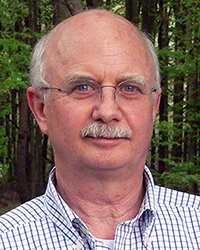
Jack C. Goodnoe, ASLA
Land Planning and Design Associates, Detroit, MI
Nomination in Works by the Michigan Chapter
Jack Goodnoe has risen to be a leading landscape architect in the design of contemporary American and international cemeteries. His 40 years of industry-changing design has created, transformed, and enriched the landscapes of more than 125 cemeteries. His pioneering work in sustainable, green cemeteries is establishing new models and setting industry standards of environmental performance and design quality, such as his development of the concept of “ecotone burial,” where a rich biological zone interfaces between two ecosystems. Jack is the landscape architect most chosen for designing new facilities within historic American Garden Cemeteries, where his work protects and enhances these rich 19th century landscapes. At the Forest Conservation Burial Ground in Ashland, Oregon, Jack’s master plan incorporates both an extensive cemetery master plan and an ongoing site restoration project. This cemetery design employs his invention of ecotone burial zones, fostering environmental diversity and creating new, high-value burial areas. At The Preserve in Waterford, Michigan, his design turned groundwater seepage on the site into a natural stream amenity. Jack's designs for soft infrastructure, groundwater management, amenity development, native landscapes, burial layout, pedestrian circulation, meditation features, and indigenous rock memorialization in this early green cemetery established new models and standards for sustainable cemetery design. The design of Fountain of Remembrance Columbarium at Spring Grove Cemetery, in Cincinnati, Ohio, accommodates over 1,000 cremation niches while respecting and honoring its historic landscape. The growing preference for cremation and sustainable cemetery landscapes has driven the industry to reinvent itself, and Jack's work is at the forefront of this evolution.

Gary Hawkins, ASLA
Hawkins Partners, Nashville, TN
Nomination in Leadership/Management by the Tennessee Chapter
Gary Hawkins spent his nearly forty-year career tirelessly and persistently introducing, advocating for, and implementing the foundational public landscape design concepts that helped make Nashville the dynamic, thriving, and livable city that it is today. Under Gary’s direction, HPI designed dozens of high-profile and award-winning cultural, academic, residential, and commercial works such as Public Square, the Carell Family Woodland Sculpture Trail at Cheekwood Estate and Gardens, the 5th and Broadway multiuse development, and the LEED Platinum Bridge Building site design. As a young landscape architect, he set up shop in Nashville’s then neglected downtown all the while becoming active in nonprofits and various associations for preserving and revitalizing the city. He was instrumental in getting the Metro Greenways Commission established and designed Nashville’s first two greenways. Gary broadened his reach by becoming the first landscape architect commissioner on the Metro Historic Zoning Commission and becoming a board member for The DISTRICT, a nonprofit dedicated to fostering economic revitalization and preservation of Second Avenue, Broadway, and Printer’s Alley—three historically and architecturally significant sections of downtown. He started a campaign to get the widely inaccessible Cumberland River revived and was contracted to develop the “Cumberland River Greenways Master Plan,” which jumpstarted what was ultimately the addition of 6,300 acres of parks and 85 miles of greenways. An award-winning professional, Gary’s work and vision are evident in downtown Nashville, where his thoughtful designs have transformed public landscapes into vibrant spaces, and reflect a steadfast commitment to enhancing urban environments and fostering community through design and elevating the profession along the way.
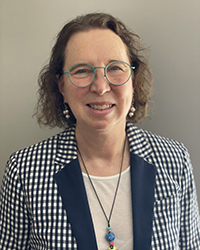
Gail Henderson-King, ASLA
Henderson-King Consulting, Burlington, VT
Nomination in Leadership/Management by the Vermont Chapter
For over thirty-five years, Gail Henderson-King has been a driving force in advancing the profession through her visionary leadership, meticulous project management, and unwavering commitment to service. Whether leading transformative projects in the public and private sectors or dedicating her time to mentorship and volunteerism, she has challenged conventional practices, expanded the influence of landscape architecture in planning, transportation, and development, and inspired the next generation of professionals. Early in her career, she worked as the planning director for the Town of Milton where she successfully promoted pedestrian and bicycle-friendly design and streetscape improvements—then a new concept for Vermont. At Lamoureux & Dickinson Consulting Engineers, Gail led transportation enhancement projects, continually pushing the design envelope to benefit communities’ health and wellbeing. At White + Burke Real Estate Advisors, her design background and exceptional project management skills benefited numerous commercial and institutional projects of statewide importance. Perhaps Gail’s most profound contribution to the profession was to lead the state’s successful effort to secure professional licensure for landscape architects. Since 2016, she has chaired VTASLA Historic American Landscape Survey (HALS) Committee, which has resulted in the documentation of over ten Vermont historic landscapes. She also led efforts to mount exhibitions in Vermont about renowned landscape architects Daniel Urban Kiley and Frederick Law Olmsted. Through her visionary leadership in development, Gail has reshaped how communities, institutions, and private developers incorporate landscape architecture into planning and project execution. Her ability to merge design thinking, regulatory expertise, and strategic vision has left an enduring legacy—transforming development practices across Vermont and influencing best practices on a national scale.
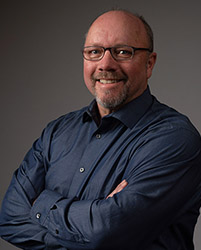
Todd J. Hill, ASLA
DTJ Design, Atlanta, GA
Nomination in Leadership/Management by the Georgia Chapter
Throughout his thirty-eight years practicing landscape architecture, Todd Hill redefined dynamic and environmentally friendly place-making design through his creativity and mastery of craft. His enthusiasm, quality of work, creative thinking, and collaborative nature balanced with pragmatism have resulted in a body of exemplary work with a positive community impact. The essence of Todd’s work is place-making: conceptualizing and delivering sustainable, engaging, and memorable designs from the perspective of the end user. He started his career with EDAW/AECOM where after 27 years, he moved to DTJ in Boulder and ultimately opened their Atlanta office in 2013. Perhaps most notable among his project work is the transformative 22-acre Centennial Olympic Park in downtown Atlanta, which he has worked on since 1994 when it was in its planning phase. Todd is diligent about sharing his knowledge and making landscape architecture more inclusive. He began mentoring as an instructor for the award-winning EDAW Summer Student Program. Todd has elevated the image of landscape architects as community leaders through decades of civic engagement including thousands of hours volunteering for organizations like Give Kids the World and as Chair of Emory Village Alliance (EVA) where he worked to shape the public realm, preserve existing assets, attract new businesses, and produce free semi-annual events. Within ASLA Todd has been active for decades, including two terms as a trustee, where he strengthened initiatives, expanded outreach, and fostered mentorship. Todd champions the power of landscape architecture to improve lives through public projects, workshops, and education. His work addresses social, environmental, and economic challenges, reflecting the highest ideals of the profession.

Joan Honeyman, ASLA
Jordan Honeyman Landscape Architecture, Washington, DC
Nomination in Leadership/ Management by the Potomac Chapter
For over 40 years, Joan Honeyman has elevated landscape architecture's transformative power to address social and environmental change. Her holistic approach underscores the essential contributions of design, science, and public awareness in creating inclusive, resilient spaces that engage communities, advance the profession, and provide ecological value. In 1990 Joan co-founded Jordan Honeyman Landscape Architecture in Washington, DC, developing the firm to take agency in addressing critical social, cultural, and environmental challenges. She expanded her practice to prioritize public and community-based projects that revitalize under-resourced neighborhoods, creating essential hubs that strengthen and unite their communities. Her work has spanned thousands of acres of public and commercial developments, parks, schools, and more than 200 private residences and is celebrated for its sustainable and community-centered design solutions. Joan's residential designs integrate simple, responsible low impact development practices that promote conservation and ecosystem support, empowering homeowners to protect and enhance their environments and setting a precedent for resilient residential landscapes that showcase water conservation, habitat creation, and recycled materials. As a trailblazer with a nontraditional background, Joan has not only built a thriving design career but simultaneously inspired over 800 students, many from diverse professional paths, at George Washington University and the University of Oregon. Her unique perspective resonates with nontraditional students, most of whom possess diverse professional trajectories. Drawing on her expertise in firm management and strong teaching foundation, she respects their varied backgrounds while preparing them to tackle contemporary challenges within the broad field of landscape architecture and environmental design. Joan’s commitment and talent advances landscape architecture’s role as a critical driver of change and a vital forward-thinking discipline.

Robert C. Hruby, ASLA
Campion Hruby Landscape Architects, Annapolis, MD
Nomination in Works by the Maryland Chapter
Co-founder of the award-winning firm Campion Hruby Landscape Architects, Bob Hruby fosters an ecological and natural approach to planting and garden design, which results in a signature style defined by regionally sensitive, sustainable gardens that authentically and harmoniously merge with the natural and built elements of their locations. At CHLA, and Oehme, Van Sweden & Associates before, Bob honed his ability to create harmony with the cycles of nature and foster the connection of people to the land. His award-winning body of work is noted for creativity, craft, detailing, and stewardship of nature. Bob has led over 300 landscape design projects, ranging from private gardens to arboretums, school campuses, civic spaces, and multifamily developments. His curiosity for how things are built and a drive to solve complex landscape challenges at diverse scales led him to become instrumental in forming CHLA’s construction division. At the main visitor entrance to Adkins Arboretum on Maryland’s Eastern Shore, Bob designed a series of interconnected stormwater gardens that guide visitors while educating them about native plants and water management. The project—“Parking Lot Alive”—transformed an asphalt lot into a model of integrated stormwater management and biophilic design, highlighting the benefits of native plants and filtered shade. At Winchester, a private garden in Annapolis, Bob spent 20 years transforming a lawn-dominated mansion into a multi-phased garden with a pool, vegetable garden, meadows, and re-forested garden blocks. At a Pine Island Coastal Retreat in Spring Island, South Carolina, while at Oehme, van Sweden & Associates, Bob collaborated with the architects to craft an environmentally sound landscape to complement the Japanese-influenced residential design. Bob’s design connects the house to the land through a layered system of sustainably harvested wood terraces.
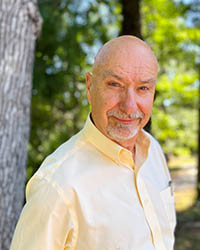
Fredrick P. Huffman, ASLA
Earth Design, Pickens, SC
Nomination in Service by the South Carolina Chapter
Fredrick “Rick” Huffman has been a passionate advocate for and practitioner of conservation and environmental protection throughout his thirty-year career. As founder of Earth Design, Rick has positioned his firm at the forefront of environmental design and landscape architecture, specializing in sustainable practices that integrate native plants, bioengineering, and ecological principles. In 1996, he founded the South Carolina Native Plant Society (SCNPS), a science-based conservation nonprofit dedicated to promoting, preserving, restoring, and educating the public about native plants. His efforts have transformed South Carolina’s landscapes, promoting native plants in green infrastructure, riparian buffers, watershed protection, and soil conservation. He served for nine years on the Natural Areas subcommittee for the South Carolina Department of Natural Resources (SCDNR) Heritage Trust Program, where he helped shape land acquisition and management strategies. In the early 2000s, Rick and Earth Design worked with Upstate Forever, a land trust and conservation advocacy organization, to create the Green School Building Guideline for Greenville County Schools, emphasizing sustainable practices like site orientation to take advantage of natural light, geothermal energy, stormwater wetlands, heat island reductions, and green roofs. His generous service has been recognized. In 2006, Rick received the “South Carolina Governor’s Award for Environmental Awareness” for his outstanding contributions to education, professional practice, conservation, and the promotion of native plants. In 2024, Rick received the Lifetime Achievement for Conservation Award from the Conservation Voters of South Carolina, capping a career dedicated to environmental and social service. And his work with the Environmental Education Association of South Carolina (EEASC) conducting environmental education retreats and workshops, led to his “2003 Environmental Educator of the Year” award.

Elaine Kearney, ASLA
TBG Partners, San Antonio, TX
Nomination in Leadership/Management by the Texas Chapter
Elaine Kearney is a driving force in landscape architecture, influencing its visibility, practice, and trajectory nationally, regionally, and locally with a particular commitment to advancing equity within the profession. Nationally, Elaine leads through her participation on the board of the Landscape Architecture Foundation. As Vice President of Development, she has been instrumental in raising funds to support the foundation’s significant research, leadership, and scholarship programs, including over $2.5M for the establishment of the IGNITE program for minority students. In private practice, Elaine is the sole female member of the Board of Directors of TBG Partners, the largest landscape architecture firm in Texas, where she has been a vocal advocate for implementing leadership opportunities and pay-equity policies to measure and address racial and gender parity. As managing principal of TBG’s San Antonio office since 2017, she has created a thriving practice that champions economically disadvantaged and historically underserved neighborhoods. Elaine also serves in leadership positions on notable nonprofit organizations and boards, serving, for example, as Vice President of the San Antonio Botanical Garden, where she guided the development of a visionary new 10-year master plan that emphasizes conservation of the unique flora of South Texas, and serving as a citizen adviser for the Linear Creekway Parks Advisory Board, which provides input on a network of over 100 miles of trail and growing. In recognition of her contributions, Elaine was awarded the 2022 Texas ASLA Service Award. An exceptional leader, her holistic approach is a model process for transformational development of the public realm through strong advocacy for public funding, political support, and public/private stakeholder collaboration.

Chad Kennedy, ASLA
Westwood Professional Services, Modesto, CA
Nomination in Leadership/Management by the California Sierra Chapter
Chad Kennedy’s career has been dedicated to creating inclusive, innovative, and sustainable environments that enrich communities and advance the profession. His life’s work is rooted in designing inclusive play environments that bring together individuals of all ages, abilities, demographics, and socio-economic backgrounds. His award-winning projects reflect a seamless blend of innovation and inclusivity, inspiring professionals, clients, and communities alike to embrace the ideals of justice, equity, accessibility, and sustainability. As a mentor, volunteer, and advocate, he has consistently elevated public understanding of landscape architecture and its pivotal role in shaping these places. Guided by his unwavering belief in the power of play and recreation, Chad’s work has created a legacy of inclusion, resource conservation, and innovative design. In 2023, Chad’s leadership in education and design culminated in the release of his first nationally published book, “The Nature of Inclusive Play: A Guide for Designers, Educators, and Therapists,” co-authored with occupational therapist Amy Wagenfeld. At his firm, Chad founded and cultivated a thriving landscape architecture department with over 40 professionals. One notable example of his leadership is the creation of the Awesome Spot Socially Inclusive Playground in Modesto, CA. This ground-breaking project brings research-based sensory integration, technologically advanced play features, and socially inclusive, accessible design to California’s Central Valley. Chad’s influence extends globally through his collaboration with Engineering Ministries International and Kids’ Around the World on projects in Uganda. Chad has delivered compelling presentations at TEDx and numerous national conferences, showcasing the impact of thoughtfully designed spaces to foster connection, inclusion, and sustainability.

Christopher Kent, ASLA
PGAdesign, Oakland, CA
Nomination in Service by the Northern California Chapter
For over three decades Chris Kent has advanced the profession of landscape architecture through sustained pro bono service, blending his passion for the natural world with a deep commitment to community engagement, ecological stewardship, and public advocacy. His activities cover many different areas but all with the goal of creating meaningful lasting change in communities. In 1997, Chris co-founded Friends of Five Creeks (F5C) with hydrologists, biologists, and engineers to restore degraded urban waterways in Berkeley, Albany, and El Cerrito. He has played a pivotal role in transforming hardened urban waterways into thriving public assets with his master plans, community outreach, and hands-on work reconnected people with neglected creeks. As a volunteer with the National Park Service-Rivers, Trails, and Conservation Assistance program, he lent his design expertise to help communities across California envision and fund recreational trails. Through his roles on city commissions, Chris has guided forward-thinking policies, setting new standards for integrating sustainability, aesthetics, and community needs into public spaces. Chris’s leadership in the Northern California Chapter spans over two decades where he has held multiple roles within the Chapter and ultimately served two terms as Trustee. As a long-time member of the Government Affairs Committee, Chris’s efforts led to record-breaking engagement in federal legislative advocacy, amplifying the profession’s voice with policymakers and setting a benchmark for other states. And for 15 years, Chris has been a driving force behind a monthly Plein Air painting group of like-minded people whose goal is to use painting as a lens for observation and appreciation of the area’s public landscapes. Whether mentoring students or helping communities directly, Chris’s influence has been deep and wide and long lasting.
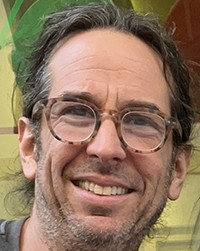
Jeff Klein, ASLA
Deputy Chief of Landscape Architecture, City of Detroit, MI
Nomination in Leadership/Management by the Michigan Chapter
As a landscape architect and long-time resident of Detroit, Jeff Klein has spent his career leading the steady rebuilding of the city’s essential public and private green infrastructure—parks, greenways, play spaces, gardens, and commons. Jeff’s leadership has been pivotal in the creation and restoration of public and private space that integrate ecological and social outcomes by organizing teams and resources to optimize a project’s outcome. After twenty years in private practice leading projects as an independent design-build contractor, Jeff joined the city staff at a time when it was in deep decline, parks were closed, and neighborhoods were still losing residents. Jeff was charged with rebuilding the Park Development Unit responsible for building and maintaining more than 300 city parks. His leadership skills were quickly apparent as at the end of the first season—all the swings were functioning safely for the first time in a long time—setting standards and approaches that have made it one of the most effective city units. Within two years Jeff was tapped to fill the newly created Deputy Chief of Landscape Architecture position to manage nine parks under the new Strategic Neighborhood Fund, each requiring different approaches but all involving community members, stakeholders, and leadership. Jeff also led the wildly successful detailed design, construction, and maintenance/operations establishment for the first phase of the Joe Louis Greenway (JLG), for what will be a 27-mile loop around the city. Jeff’s outstanding vision, leadership, management and organizational skills, and his love for Detroit have been instrumental in the renewal of dozens of essential public landscapes that serve one of the more diverse urban populations in the world.
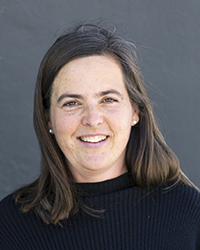
Sarah Kuehl, ASLA
EinwillerKuehl Landscape Architecture, Oakland, CA
Nomination in Works by the Northern California Chapter
Sarah Kuehl champions physical design solutions that create relationships between people, systems, and the past and future. An innovative thinker and designer, she is a master storyteller who often works beyond the traditional frame of landscape to achieve dynamic public spaces. Her track record for creating public spaces that exceed expectations is a testament to her abilities as a storyteller, designer, and generous leadership. Sarah began her career at PWP Landscape Architecture, where she led the visioning and schematic design for the new Newport Beach City Hall and Park. Once a wide median strip between two vehicular thoroughfares, the site was transformed into 16 acres of civic and ecological parklands to become a beloved community place. At the firm she co-founded in 2011, EinwillerKuehl Landscape Architecture, Sarah’s vision for Gateway Park in Oakland transformed an isolated 15-acre site into a 72-acre linear park with a bike ped path that connects from the residential areas over a highway and above the railroads to the parklands. The park highlights the industry, infrastructure, and ecology that have shaped the history of this spectacular stretch of shoreline. At Township Commons in Oakland, this successful award-winning waterfront park was inspired by the shipping history and natural history of the site. Select building elements are preserved in the design, but are also transformed to inspire and allow for new uses—including the creation of containers of coastal, drought-tolerant plants. Winner of the Rome Prize in 2004, Sarah is an advocate for cities and her practice is informed by restorative actions as well as spatially rich design thinking.

José de Jesús Leal Loera, ASLA
Native Nation Building Studio, MIG, Sacramento, CA
Nomination in Leadership/Management by the Sierra Chapter
José de Jesús Leal Loera embodies the transformative power of landscape architecture, leveraging his lived experiences, professional expertise, and cultural heritage to advance the profession in ways that resonate deeply with Indigenous and non-Indigenous communities alike. His practice, teaching, and volunteering blur together, all feeding into his work to prioritize Indigenous communities and elevate their traditional ecological knowledge. He has long persevered, slowly building partnerships, supporters, and successes one relationship at a time. José is a national presence in the current Indigenous Renaissance, reminding us that landscape architecture is a centuries old practice that is not only shaped by culture but reflects it. A principal and Native Nation Building Studio director at MIG, José’s work focuses on the power of culturally sensitive inclusive community-based design; he has helped build a studio of Indigenous landscape architects, designers, and planners who are working with and for Indigenous people throughout the US. Through his professional practice, speaking and teaching engagements, and his signature sense of humor, he pushes the profession to listen more deeply and respond with collaborative problem solving. José demonstrates that landscape architecture is also about healing connections between individuals, communities, and the nature world. His leadership in advancing Traditional Ecological Knowledge and relational approaches to land and ocean stewardship serves as a model for how the profession can grow and evolve. At ASLA, the Landscape Architecture Foundation, and America Walks, and as a teacher, a speaker, an award-winning designer, José is an indefatigable advocate for bolder visions and advancing the value of landscape architecture generally but Indigenous voices specifically.
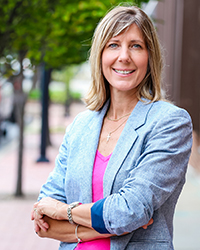
Carisa McMullen, ASLA
Landworks Studio, Olathe, KS
Nomination in Service by the Prairie Gateway Chapter
Carisa McMullen has dedicated her career to promoting and improving landscape architecture through leadership in international, national, regional, and local organizations. She created her own practice committed to exposing the public to and teaching others about the profession of landscape architecture. Her ability to recognize underlying challenges or obstacles, bring them to the forefront, and work alongside others to solve issues in creative ways has yielded exceptional accomplishments and her fingerprints can be found in and around her neighborhood and international community dating back decades. Carisa has worked over a decade to revitalize downtown Olathe and demonstrate to varied audiences the skills and expertise of landscape architects. To make the biggest impact, she purchased a key building in Olathe’s downtown. Renovating outdated office to new retail at ground level and with her studio above, Carisa remains a key business and stakeholder while using her influence for downtown revitalization. She participates in steering groups, like Olathe’s Downtown Plan, Olathe Comprehensive Plan, the Chamber of Commerce Convention and Visitor Bureau Board, and the Public Art Committee. Using her firm as a platform, Carisa has created opportunities and strategically accepted volunteer positions that advance her beliefs and policies about the profession, allowing her to authentically lead and manage organizations. Her firm facilitates events with the local Boys & Girls Clubs, sponsors and engages annually in a Women’s Leadership Summit, and offers pro bono design services to organizations in need, including several who provide sustainable food options. Carisa is the 2019 recipient of the Prairie Gateway Chapter’s highest honor, the Alton B. Thomas Award, which recognizes performance that directly promotes or enhances landscape architecture.

Lauren Meier, ASLA
Landscape Preservation Consultant, Concord, MA
Nomination in Knowledge by the Boston Chapter
Lauren Meier has successfully deployed a comprehensive array of methods—scholarship, practice, teaching, technical review and assistance—to increase the knowledge of landscape architectural history, improve historic landscapes, and to share this knowledge with the world. As the first historical landscape architect to serve in the National Park Service, she expanded preservation’s consideration to go beyond buildings and include cultural landscapes and wrote the first standards and guidelines for the preservation of historic landscapes across the United States. The Historic Landscape Initiative was recognized with a Presidential Design Achievement Award from the National Endowment for the Arts, an ASLA Honor Award in Communications, and an NPS Professional Achievement Award. Her list of other contributions is extensive. She led the award-winning restoration of Frederick Law Olmsted’s Fairsted, now a National Park Service site. She developed new methodologies to help National Parks nationwide address contemporary challenges, demonstrated in work that she led in Acadia National Park and Woodlawn Cemetery. Lauren has contributed to dozens of articles, technical reports, and books; she has given nearly 100 lectures to local and national audiences; she wrote and delivered curriculum for third graders; and she continues to be an active contributor to her own towns’ historical commissions. As a volunteer on committees and as an adviser to local, state, and national programs, Lauren has contributed her expertise in preservation practice to help communities understand and care for their cultural resources. And as a mentor to younger practitioners, Lauren has trained many emerging professional landscape architects who have gone on to successful careers, extending her influence on landscape preservation practice nationwide.

Curt Millay, ASLA
American Society of Landscape Architects, Washington, DC
Nomination in Leadership/Management by the Executive Committee of the Council of Fellows
For over a decade, Curt Millay has devoted his exemplary leadership, management, and administrative skills to advance the mission of the American Society of Landscape Architects (ASLA). Through his steadfast service to ASLA, he continues to inspire and energize countless members, students, allied professionals, and peers. His dedication and advocacy for the profession are nothing short of extraordinary, making a lasting impact that is both invaluable and irreplaceable. ASLA has indeed been elevated through his passion, hard work, and unwavering commitment to the organization and its mission. The list of his achievements and leadership contributions is extensive, showcasing a profound influence on ASLA’s policies and operations as well as some of its most critical initiatives. From playing a key role to revitalizing the Center on Landscape Architecture and managing the impactful Chinatown Green Streets project to overseeing grants for numerous ventures that underscore the importance of the profession, his work has touched nearly every aspect of the Society. Always offering support with good humor and a down-to-earth approach, he has gained the trust and respect of everyone with whom he has worked. Curt has been the unwavering backbone of the Society and serving as the most valued and dependable counselor for a dozen ASLA Presidents, and as ASLA’s liaison to allied organizations and numerous volunteers. Curt has provided steadfast guidance to the ASLA Executive Committee, Board of Trustees, and Council of Fellows Executive Committee, as well as to ASLA’s numerous committees, working groups and task forces - always working behind the scenes to ensure every detail is perfectly managed. His advice and guidance are consistently insightful and enthusiastically welcomed by recipients.

Kaia Nesbitt, ASLA
HDR, Denver, CO
Nomination in Leadership/Management by the Colorado Chapter
Kaia Nesbitt is an award-winning landscape architect who harnesses multidisciplinary teams to deliver transformative community, campus, and urban redevelopment projects that advance city resiliency, green infrastructure, and healthy, sustainable communities. She is energized by the challenge of solving multiple problems simultaneously and posits that landscape architects—with their distinctly broad understanding of the public realm, ecology, and infrastructure—are natural leaders and connectors who can fulfill that aspiration. Kaia has built a robust urban design, planning, and landscape architecture practice within a large, global AE firm by coalescing diverse disciplines and design perspectives when working on both public- and private-sector projects. During her 20-year career, which began at EDAW, Kaia’s portfolio of award-winning, human-centered projects demonstrates her ability to successfully lead and deliver creative placemaking at multiple scales. In her many leadership roles at HDR, Kaia has influenced and expanded urban design and landscape architecture teams into a variety of market areas, including health-oriented development, parks as infrastructure, net zero community development, and the intersection of mobility and land use. Kaia’s vision for the profession often finds her reaching “across the aisle” to allied professional organizations, forging relationships, building connections, and sharing knowledge. She is currently the Colorado District Council Chair for the Urban Land Institute—the first landscape architect to ever serve in that role—which gives her a forum for sharing the value that landscape architects bring to development. Whether it’s through the projects she leads, the initiatives she guides, or the networks she has cultivated, her message is consistent and clear: landscape architects are integral to designing a just and equitable world.
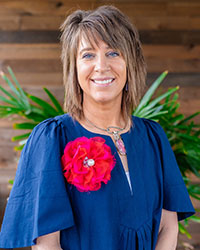
Lynne Nischwitz, ASLA
The Kleingers Group, Cincinnati, OH
Nomination in Leadership/Management by the Ohio Chapter
Lynne Nischwitz’s visionary leadership in design is evident in her notably diverse body of award-winning projects that prioritize sustainability while fostering social and environmental connections. Her vast portfolio encompasses many varied scales and project types, including parks, streetscapes, university and corporate campuses, urban plazas, museums, K-12 schools, golf courses, and sport venues—all delivering dynamic impact whether in urban or rural communities. After fostering her design aesthetic at EDAW, she founded a highly successful landscape architecture studio in an engineering firm and, through her creative, transformative leadership, has advanced both fields of landscape architecture and civil engineering. Her perseverance in leading, collaborating, and educating civil engineers about landscape architecture has resulted in innovative solutions that celebrate high design, promote sustainability, and influence regional design standards. Among her transformational high-profile projects are the historic Union Terminal and its plaza restoration, the Cincinnati Black Music Walk of Fame, and her creative master planning that was pivotal in keeping the world-class Cincinnati Open Tennis Tournament in Mason, Ohio. With a passion for creating positive change, she organizes and leads Community Summits in which she convenes regional public administrators, planners, and economic development directors. These design discussions focus on the art, stewardship, sustainability, social equity, and the importance of accessibility to greenspace for all in the urban landscape. Lynne speaks nationally and regionally on design, advocates for legislative affairs, and mentors young professionals. Lynne’s unwavering thirty-year commitment to advancing landscape architecture has left an exceptional legacy and a remarkably diverse array of projects that raise the bar for design in the profession.
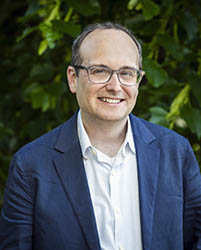
Richard Roark, ASLA
OLIN, Philadelphia, PA
Nomination in Works by the Pennsylvania-Delaware Chapter
Richard Roark is a landscape architect who fosters essential connections to create landscapes of lasting relevance. Committed to the power of collaborative intelligence, he shapes civic works that fulfill—rather than merely reflect—the aspirations of the public and his clients. Sustainability and resilience are central to his work, where aesthetic vision intersects with technical innovation to produce iconic landscapes. As a partner at OLIN, Richard approaches each project with curiosity and exemplifies the power of landscape architecture to create enduring public impact, enriching communities across both natural and built systems. At Dilworth Park, Richard helped craft an urban oasis from a fragmented and inaccessible plaza into an iconic destination in the heart of Philadelphia, blending the historic character of City Hall with modern design sensibilities. Key features include an interactive fountain that converts to a winter ice rink, a lawn parterre, and sculptural glass pavilions offering transit access. ResilienCity Park, now Hoboken’s largest park, blends recreation, public space, and nature-based solutions to address flooding in a city committed to climate risk adaptation. Transforming a former industrial site, the park manages nearly two million gallons of stormwater and features amenities such as a raised “Palisades Terrace,” a community event room, a café, a splash pad, an ice rink, walking paths, and a “Play Valley” with treehouses and natural play spaces. In London, Richards created a welcoming yet secure landscape for the US Embassy that reflects democratic ideals of transparency and equality. Inspired by a combination of American landscapes and English park tradition, the design features spiraling paths, prairie-like meadows, and a freshwater pond and transforms the green roof into a lush meadow of native grasses.
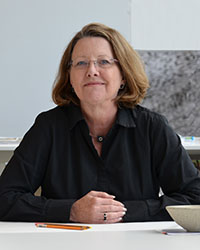
Margaret Robinson, ASLA
Asakura Robinson Company, Austin, TX
Nomination in Leadership/Management by the Texas Chapter
For 45 years, Margaret Robinson has transformed landscape architecture by blending science, technology, and design. After earning her BLA, she pursued a master’s studies in computer science, becoming a trailblazer in integrating technological innovation into the field. During the 1980s, Margaret pioneered the adoption of advanced tools such as viewshed analysis, 3D modeling, animation, and digital drawing, enabling landscape architects to manage more complex, multidisciplinary projects. Her ingenuity expanded the technical reach of the profession, setting the stage for more robust, collaborative approaches in urban planning and environmental management. Currently, Margaret is the Founding Principal and Director of Sustainability at Asakura Robinson, where her skillful management of the firm’s multiple offices while shaping its mission to increase the scientific rigor of their design and planning practices are critical to the firm’s 21-year track record of award-winning transdisciplinary work. Her belief in landscape architecture as a vital tool for enhancing public health and social equity led to the creation of her award-winning Healthy Places Toolkit and Healthy Parks Plan, which demonstrate how data-driven planning can improve access to parks and positively affect community health outcomes. Her work tackles critical climate issues, including flooding, drought, and water scarcity. By promoting regenerative design, applied fluvial geomorphology, and green stormwater infrastructure, she has developed cutting-edge solutions that improve water quality, conservation, and habitat restoration. A dedicated advocate for the profession, Margaret has held leadership positions within the Texas Chapter, including serving as President from 2011 to 2012, during which time she initiated the highly successfully first Chapter Strategic Plan. Her many contributions earned her the TX/ASLA Distinguished Member Award in 2023.

Carmine Russo Jr., ASLA
REALM Collaborative, Columbus, OH
Nomination in Service by the Ohio Chapter
Throughout his twenty-year career, Carmine Russo has proven himself to be an exceptional leader through his selfless efforts to advance the image and awareness of the profession in the state of Ohio and across the nation. Beginning as a student committee member of ASLA with LABash, Carmine held key positions within ASLA, including Secretary, Treasurer, Vice President of Communications, President-Elect, President, Past President, and Vice President of Legislative Affairs. Through these elected roles, Carmine demonstrated a deep commitment to advancing ASLA’s mission and championing the profession. As the Ohio Chapter’s VP of Legislative Affairs and Chapter liaison to the state licensure board, Carmine was instrumental in the creation and success of the first ever CLARB/ASLA Joint licensure summit which was held in Columbus. He has worked to maintain licensure in Ohio, improve the cooperation between the licensure board and chapter, improve state and local government agency regulations to include landscape architects, defeat unfair taxes on services, establish lien rights for services, and create and maintain better communications with state legislature and state agencies. Due to Carmine’s exceptional service, the chapter was awarded the 2018 ASLA Chapter of the Year Advocacy Award. In addition, Carmine volunteers with other community and sustainability efforts, notably, the Columbus Neighborhood Design Center and US Green Building Council-Ohio, as well as presenting and sharing his knowledge at many universities and community organizations. He is a co-founding principal of REALM Collaborative, which has quickly become a recognized force in landscape architecture, urban design, and community engagement with institutional and public and private sector clients in the US and abroad.
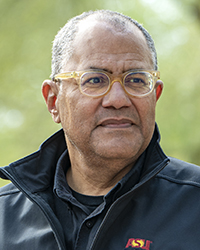
Byron W. Sampson, ASLA
Arizona State University, Tempe, AZ
Nomination in Leadership/Management by the Arizona Chapter
Byron Sampson’s stellar 45-year career has been focused on creating sustainable design solutions that are anchored in a strong sense of place. Over the past 20 years, Byron’s role in working with other design professionals has been to guide, shape, and transform solutions to meet the needs of the community. His long record of collaborative works has resulted in numerous award-winning projects. His impact is especially great at Arizona State University, where his appointment as the first university landscape architect led to a transformation of the five campus landscapes, shifting them from a “resort oasis” aesthetic to one firmly rooted in the principles of the Sonoran Desert. He implemented a new site amenity standard that addresses visual character, material palettes, furnishings, on-site multimodal transit, lighting, and wayfinding and accommodates the university’s commitment to sustainability, innovation, local sourcing of materials, and reducing the institution’s carbon footprint. Byron also developed a public art master plan and created a tree bank initiative. Because of his passionate belief in the need to remove turf from the campuses, he was a founding member of the ASU Sustainable Urban Ecology group and was part of a new multi-departmental design narrative to guide future landscape design solutions. At the onset of the COVID pandemic, Byron was tasked with developing outdoor rooms for on-site classes for alternative learning. After his team identified four sites on the Tempe campus, he led a massive coordination effort to secure and place 250 tables, 1,000 chairs, 300 benches, and four shade structures. Byron was chair of the City of Phoenix Historic Preservation Commission for two consecutive terms and is a board member of the Black Landscape Architect Network.

Dolores Silkworth, ASLA
Confluence, Omaha, NE
Nomination in Leadership/Management by the Nebraska/Dakotas Chapter
Dolores Silkworth has shaped the landscape architecture profession through her courage, determination, and advocacy for its essential role in public and private development. Her 40-year career blends policymaking, design leadership, and mentorship, leaving lasting impacts across Omaha, the Great Plains region, and beyond. Early on in her career, beginning at the Omaha Parks and Recreation Department, she convinced them that landscape architects should manage park design, not engineers as had long been the case. As head of Omaha’s Park Planning division, she led a professional team that became recognized for its expertise in sustainable park design. They initiated the first three miles of trails, expanded the network to 67 miles, which has since increased to today’s 120-mile system. Renowned for her design expertise, Dolores has guided interdisciplinary teams that integrate art, ecology, and community needs. Her work on Bayliss Park and South 24th Street exemplifies how she harmonizes design with cultural and historical narratives to create spaces that reflect and celebrate local identity. Both projects earned recognition as Great Places in America. Her designs have earned over 23 ASLA awards. Dolores has been proactive in advancing policy and licensure reform, serving the Great Plains Chapter in multiple leadership roles, chairing the Nebraska State chapter, serving as board member and chair of the Nebraska State Board of Landscape Architects, and playing a pivotal role with CLARB to refine licensure exams. As a private practitioner, she founded the Omaha office of Confluence. Through her guidance, she instills values of people-centered design and environmental stewardship, shaping future leaders whose innovative work continues to elevate communities and uphold the highest standards of the profession.
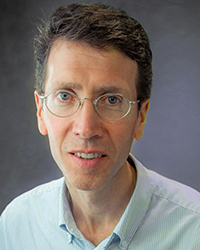
Lee R. Skabelund, ASLA
Kansas State University, Manhattan, KS
Nominated in Knowledge by the Prairie Gateway Chapter
Lee Skabelund has advanced the practice and impact of landscape architecture through research, teaching, and community service focused on how restored ecosystems and place-based mixed-species green roofs and green infrastructure can make cities more livable for people and larger ecological systems. For more than three decades, he has been committed to learning through integrated planning/design, local advocacy, project implementation, and long-term observation and assessment of created and restored systems, data collection in the field, and hands-on management of green infrastructure systems within local communities. His commitment to improving how green roofs and other green infrastructure are designed, implemented, and managed in the Great Plains and similar climates is exceptional, revealed by his efforts to disseminate ideas through articles, presentations, and workshops at international, national, regional, and local venues. Lee established an unparalleled green roof research hub at Kansas State University featuring six distinct green roof environments devoted to understanding the use of native plants and other adaptive plant species in green roof environments and was internationally recognized with the Research Award of Excellence from Green Roofs for Healthy Cities in 2021. An ASLA member since 1990, Lee has helped develop and refine ASLA’s environmental policy statements and has served as Chair/Co-Chair and long-term adviser (2002-present) for the Ecology and Restoration PPN and Reclamation and Restoration Professional Interest Group. He is widely recognized as a valued educator, dedicated researcher, and persistent advocate for expanding and deepening the influence of landscape architecture. Lee’s work is characterized by thoughtful reflection and meaningful action, working closely with the broad range of individuals who research and shape green roofs, low-impact green infrastructure, and ecosystems, including designers, students, maintenance workers, community members, professionals, and scientists.
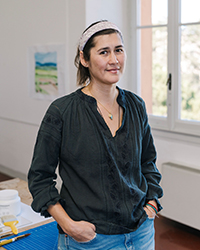
Lauren Todd Stimson, ASLA
STIMSON, Princeton, MA
Nomination in Works by the Boston Chapter
Lauren Stimson is immersed in and inspired by the rural, and this approach is evident throughout her projects. Her work expertly elevates natural systems, embracing wildness and restoring lost ecologies. Applied across landscape typologies, from established (garden, campus, cultural institution, city park) to new (green infrastructure land bridge), the projects that Lauren has led for STIMSON have garnered design awards at every level of recognition and improve both human lives and ecosystems. She is a landscape architect, artist, activist, firm leader, parent—intentionally intertwined roles of living, learning, and practice. This careful choreography of work and home culminated in the creation of Charbrook, a farm and landscape architecture studio physically residing within a teaching landscape. A recipient of the Rome Prize in 2023, Lauren’s projects always begin with research, to uncover buried histories and the intangible layers of a landscape that have shaped it over time. At Northeast Harbor in Mount Desert Island, ME, Lauren faced a severely compromised site and shallow soils. Research prompted her to take the land back to previous moments in its environmental history: high meadows, alpine summit, shrubland, and low-lying bogs. At the University of Massachusetts, Lauren worked with the architect of the new Design Building at her Alma Mater to unite the building and site. With exposed timber frame building construction, regionally inspired gardens, and green infrastructure, the project establishes a new ecological and creative standard for design students and academia, both inside and outdoors. The Hardberger Park and Land Bridge in San Antonio, Texas, was conceived of as cultivated wild, taking cues from surrounding agrarian missions and natural environs. This 330-acre park contains an urban ecology center, outdoor classrooms, picnic areas, overlooks, dog parks, and over eight miles of trails.

Lisa Switkin, ASLA
Field Operations, New York City, NY
Nomination in Works by the New York Chapter
Lisa Switkin has spent over two decades masterfully shaping transformative public spaces that elevate both the field of landscape architecture and the human experience, primarily through her leadership on high-profile, complex urban projects. Recognized for her collaborative leadership style and creative approach to public engagement, her work weaves together community needs, environmental stewardship, and design excellence into spaces that become integral parts of the urban fabric. Her projects transform cities, creating vibrant social anchors that are highly site-specific and deeply rooted in place, history, and community, and inspire similar innovations worldwide. A partner at Field Operations, she also served as president of the Landscape Architecture Foundation and was a Fellow of the American Academy in Rome. Since 2004 Lisa has guided the design of the much-lauded High Line, the now iconic 1.5-mile elevated railway that was reclaimed as a world renown public space on Manhattan’s West Side. The innovative design is characterized by an intimate choreography of movement, with alternating vistas and experiences, and distinctive paving, planting, furnishing, lighting, and social spaces. Her work on the Domino Sugar Factory site in Brooklyn was inspired by extensive community input, resulting in the five-acre Domino Park reconnecting Williamsburg to the East River for the first time in 160 years. Thirty large-scale salvaged relics are incorporated into the design, showcasing the industrial past. Planted with native species, the park acts as a natural buffer and absorbent sponge. In the heart of Santa Monica, the six-acre Tongva Park is one of the first large-scale contemporary urban projects to highlight California native plants, featuring over 300 new trees and thousands of native plants, and was a trailblazer in climate-appropriate water use in public spaces.

William C. Sullivan, ASLA
University of Illinois Urbana-Champaign, IL
Nomination in Knowledge by the Illinois Chapter
In a career of more than thirty years, William Sullivan’s contributions to landscape architecture have transformed research, education, and practice. His work bridges science, medicine, and design, and has expanded the science on how accessing green infrastructure affects mental health, recovery from mental fatigue and stress, success in school, and social cohesion among neighbors. As the most cited landscape architecture researcher globally—with over 19,500 citations to his published work—William and his collaborators have substantially bolstered the evidence base for design decision-making. By employing pioneering techniques such as thermal imaging, brain monitoring, and artificial intelligence applications—he has developed new ways of measuring and documenting landscape impacts on human health, cognitive function, and community resilience, setting new standards for landscape architecture scholarship. From delivering inspiring lectures to audiences worldwide, to teaching incarcerated students in the University of Illinois’s Education Justice Project, to engaging students at Chicago’s Academy of Math and Science, William has created opportunities in our profession for historically omitted populations, amplifying diverse voices and perspectives. His work has been recognized with numerous prestigious awards and tens of millions of dollars in grants. With his involvement in initiatives like the European Union’s Climate-neutral Cities program and partnerships with African institutions and as the first landscape architect appointed to the National Academy of Medicine’s Roundtable on Environmental Health, he has elevated the profession’s role in public health policy globally. His rigorous research methods combined with practical applications have helped increase demand for professional services while providing practitioners with tools for creating more effective, equitable, and healthy environments.

Patricia Trauth, ASLA
RICK, San Diego, CA
Nomination in Leadership/Management by the San Diego Chapter
Patricia Trauth has built her four-decade-long career around championing the landscape architecture profession, inspiring and supporting new career pathways, pioneering management roles for herself and other women, and excelling at her craft by creating innovative sustainable designs. Her impact at the local, state, and national levels through ASLA and other leadership roles are widely recognized by her peers. As the second woman principal of RICK (formerly Rick Engineering Company) and through her partnership role in multidisciplinary firms, she has elevated landscape architecture to be a critical component in the planning stages of transportation, complete streets, and economic development. Patricia has planned and designed numerous public and private projects in San Diego County, the Los Angeles basin, and the greater Denver area. Her most noteworthy project transformed the San Diego International Airport into a sustainable environment using state-of-the-art materials, processes, and equipment while accounting for climate-related challenges such as sea level rise, drought, soil depletion, and air quality. Patricia’s passion for the profession led her to serve in many ASLA positions: two terms as San Diego Chapter Trustee: San Diego Chapter President, President-elect, and Vice President (two terms); newsletter editor; Arizona Chapter President-elect; and state-level representative on the California Council ASLA. She also chaired the Landscape Architects Technical Committee, which manages licensure in California for over 3,600 professionals, Patricia played a key role in making California legislation more inclusive. At every opportunity, whether working in the private sector, teaching, or volunteering in related organizations, she has actively worked to advance the profession of landscape architecture through raising awareness and facilitating the professional development of students, colleagues, and staff.
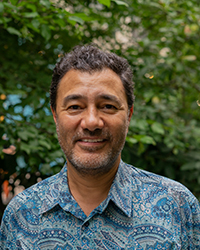
Steven Tupu, ASLA
terrain-nyc landscape architecture, New York City, NY
Nomination in Works by the New York Chapter
Steven Tupu’s work reflects his long dedication to environmental justice for underserved communities—from landscape architecture to basic human needs. He sees design as a public service and addresses inequalities suffered by minority communities through his collaborative approach to design. Growing up in a Pacific Island community, an understanding of responsibility beyond family was instilled at an early age and he was shown what can be accomplished as a collective. When Steven launched terrain-nyc in 2004 he prioritized the culture of the office and collaboration where every designer contributes to every project. St. Augustine Terrace in the Bronx was formerly the site of a Catholic church, whose demolition exposed large swaths of old rock formations, which became the organizing heart of the site. The rock face is planted in sporadic, lush pockets of native planting while other natural depressions in the rock’s surface are left to create temporary ponds. At the Bush Terminal Industrial Campus, the nation’s first vertical factory located in Industry City, Brooklyn, Steven led the design of Courtyard 5-6 and transformed the 60’ wide x 600’ long railway loading dock into a series of distinct landscape experiences. The heart of the courtyard is a woodland forest that frames a large flexible-use turf space which has become a vibrant neighborhood destination. Working at Morningside Gardens in New York, Steven’s investigative rigor revealed the need for more than a walkway renovation of the 1957 campus; it led to a comprehensive redesign of the stormwater system, the development of areas for new uses, and improved accessibility across the campus, reflecting the needs of the multigenerational residents.
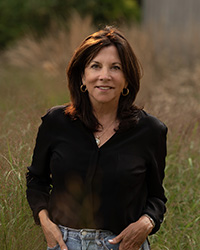
Tara Mahon Vincenta, ASLA
Artemis Landscape Architects, Sandy Hook, CT
Nomination in Works by the Connecticut Chapter
Tara Vincenta’s work is nationally recognized for its thoughtful, beautifully detailed design and execution that harmonizes environmental sustainability and healing while fostering personal connections for all who encounter her designed spaces. For over 40 years her conviction in the healing power of landscapes has been applied across high-profile community and residential projects, with distinction for her industry-leading contributions to resilient coastal residential design. A true plantswoman, she is sought after for her knowledge and ability to weave resilient and native plants that heal, protect, and enhance shoreline ecosystems. Tara gives generously of her time to share her approach to landscape, including developing guidelines and a prototype environment connecting children on the autism spectrum with nature. Her award-winning project, The Clearing: Sandy Hook Permanent Memorial, is a nature-centric memorial honoring the 26 victims at Sandy Hook Elementary School. The five-acre site focuses on nature and serenity with a young sycamore as its centerpiece, situated in a low granite basin with water, its beveled edge engraved with the names of the deceased. In Fairfield, Connecticut, Hurricane Sandy devastated a residential property, wiping away all vegetation, with the house remaining intact. Tara’s design focused on resiliency, protecting the property from future storms, and visually and physically reconnecting the newly elevated home with various ground-level spaces, while creating new dunes to bear the impact of subsequent storms. A Jamestown, Rhode Island, coastal residence was transformed into a resilient landscape focusing on expansive ocean views while respecting and fortifying the surrounding natural environment. After successfully mitigating the many invasive species, the site was replanted with native plants, improving the health of the wetland environment, providing food and shelter for wildlife, and engagement with nature.
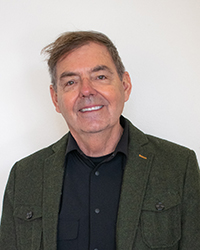
David Watts, ASLA
California Polytechnic State University San Luis Obispo, CA
Nomination in Knowledge by the Southern California Chapter
David Watts’ commitment to child development, social justice, and international engagement has led to extensive research, publications, and practice of his “Active Nature” theory. He has provided significant new knowledge on the interconnected aspects of children’s health, resilience, and physiological growth and endorses the intentional integration of natural elements within play settings that are affordable and equitable. David’s important work on Active Nature has spanned decades and has been published in multiple journals and books and earned him recognition with the Cal Poly University’s President’s Award for Service Learning. David has taken his program and his students to South Africa where he has led design-build initiatives for the development of sustainable and inclusive outdoor spaces that promote social interaction and well-being. Among those projects was the creation of a large community playground under existing utility power lines for the Ratang Bana Orphanage using limited vernacular materials. This project was awarded the 2014 ASLA Award of Excellence to Student Community Service. Closer to home, he has worked with students to conceptualize, create, and construct landscapes that contribute to building in a meaningful and purposeful way. Overall, through David’s service-learning initiative, over 40 students from five separate service-learning internships built more than 12 different projects and examined the significance of intercultural sensitivity and design applicability. As a faculty member, David has been an invaluable mentor, teacher, and adviser for both students and faculty. He goes above and beyond what’s expected in order to help his students understand and advance the practice of landscape architecture.

Stephen Whitehouse, ASLA
Starr Whitehouse Landscape Architects and Planners, New York City, NY
Nomination in Leadership/Management by the New York Chapter
Stephen Whitehouse has dedicated his career to transforming New York City into a greener city. With his forward-thinking ideas and leadership, he has put landscape architecture at the center of resilience and infrastructure strategy. As Chief of Planning for NYC Parks, he was an agency policymaker and increased visibility and types of work for the landscape architecture profession through master plans and infrastructure programs such as the Green Streets program, the Citywide Greenway Plan and its implementation, requirements for waterfront design, and strategic park acquisitions—all contributing to making a greener, more interconnected, and more equitable city. His visionary planning of the waterfront park system expanded opportunities and created new park destinations. As co-founder of Starr Whitehouse Landscape Architects and Planners, Stephen has led studies that put landscape architecture at the center of resilience strategy and created award-winning spaces that model the forward-thinking policies he helped to develop early in his career. He established foundations for wastewater programs, green infrastructure, and post-disaster coastal resilience innovations at all scales. He has designed courtyards, roof gardens and other amenity space for projects creating over 4,000 new affordable apartments. After Hurricane Sandy, Starr Whitehouse was part of the winning team for the Rebuild By Design competition with the Big U project that protects ten continuous miles of low-lying geography in a dense, vibrant, and vulnerable urban area. Throughout his more than forty-year career, Stephen has proven to be a strong leader in the landscape architecture community and beyond. An award-winning leader, he aspires to assist others in finding creative and transformational solutions.
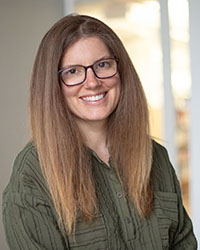
Gena Wirth, ASLA
SCAPE Landscape Architecture, New York City, NY
Nomination in Works by the New York Chapter
Gena Wirth’s longstanding commitment to progressive design practice and exemplary idea-driven work has resulted in visionary projects in the public realm, connecting social equity, climate resilience, and ecosystem health. Her dedication to exposing hidden systems of geology, ecology, and hydrology in the urban fabric has made her a leader in large-scale resilience and climate adaptation projects that advance ecological, nature-based design. As Design Principal at SCAPE and through her nonprofit volunteer work, she leads innovative projects at the forefront of climate resilience, adaptation, and urban ecological design, that advance unique forms of landscape storytelling. Public Sediment for Alameda Creek is a watershed-scale climate adaptation vision that addresses sea-level rise, drowning bayland ecosystems, and sediment scarcity in the South Bay. Public Sediment reconnects migratory fish to their historic spawning grounds; introduces a floodable creek corridor; and builds regional stewardship around sediment resources. Gowanus Lowlands in Brooklyn is an award-winning community-based vision for a new public realm, a restored waterfront edge, and open space network centered around the Gowanus Canal and its watershed—a Superfund site currently being cleaned up. The Gowanus Lowlands addresses multiple issues including urban heat island, lack of tree canopy, sea-level rise, coastal flooding, stormwater management and a combined sewer system, and lack of connectivity to open spaces across the neighborhood. Living Breakwaters introduces a layered approach to risk reduction—enhancing physical, ecological, and social resilience along the South Shore of Staten Island. Developed by a large, multidisciplinary team led by SCAPE and widely considered a model for climate-adaptive nature-based infrastructure, the project consists primarily of 2,400 linear feet of near-shore breakwaters that reduce erosion and provide a range of habitat spaces for oysters, fin fish, and other marine species.
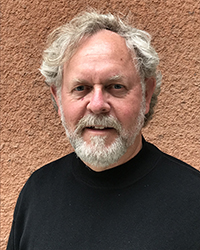
Jon Wreschinsky, ASLA
Cuyamaca College, San Diego, CA
Nomination in Service by the San Diego Chapter
Jon Wreschinsky has generously shared his dedication, leadership, and expertise to advance the profession over four decades. He has led efforts at the local, state, and national levels to promote awareness and understanding of the essential role landscape architecture plays in addressing urgent issues around climate change, landscape resiliency, and sustainability, while also having a significant impact on protecting professional licensure. Within ASLA he has served in many capacities: As President of the California Council of ASLA, he successfully led lobbying efforts to counteract the governor’s initiative to eliminate various boards and commissions that ensure the competent oversight of landscape architecture practice in the state. He developed, organized, and oversaw the establishment of the first ASLA Student Affiliate Chapter in the US, which became a model for similar programs nationwide. Jon was instrumental in establishing the San Diego Chapter’s Stewardship Committee, one of the first formed within ASLA, whose aim is to educate practitioners and local/regional decision-makers on sustainable development and other conservation practices. He serves as the Chapter Trustee and was president of the Northern California chapter. Jon was honored with a 2016 ASLA Advocacy Leadership Award for his contributions to advocacy materials highlighting the knowledge, skills, and abilities of landscape architects and how they contribute to critical planning and design issues affecting California. He continues to advocate for the profession as a member and Past-Chair of the California Landscape Architects Technical Committee. He serves on the CLARB Experience Requirements Working Group. As the profession continues to evolve, Jon’s contributions will remain a cornerstone of its ongoing efforts to improve the environment through climate-appropriate and equitable design and to share that knowledge with future generations of landscape architects.
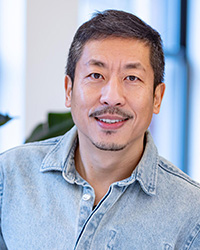
Tao Zhang, ASLA
Sasaki, Boston, MA
Nomination in Works by the Boston Chapter
Tao Zhang deftly weaves his education in ecology and landscape architecture to integrate scientific rigor and creative design in approaching complex environmental and urban challenges. Since beginning his professional career at Sasaki in 2008, he has played a pivotal role in the firm’s globally significant ecologically focused planning and design, especially in China. Leading large multidisciplinary teams, he advocates for a bold vision backed by sound ecological principles with demonstrable attention to craft and technical rigor across scales. His work has been recognized with over fifty international, national, and regional design awards. Tao is also committed to mentorship and advancing the field of landscape architecture through teaching, writing, advocacy, and volunteer efforts. Among his many award-winning projects is the 215-acre master plan for Xinyang University’s new campus in China which is designed as a living classroom set within rolling terrain, integrating outdoor learning environments and recreational spaces with stormwater management and wildlife habitats. The design features a tapestry of spaces each with its own aesthetic, ecological purpose, and management strategy. In Shanghai’s historic Jiading District, the 173-acre Central Park has been transformed into one of the area’s most beloved urban green spaces. Stitching together fragmented green patches and neighborhoods, the park is an ecological triumph with over 30 acres of woodlands alongside 14 acres of wetlands, and four acres of meadows, reviving native wildlife absent for decades. In Wuhan, the plan for the Yangtze Riverfront re-envisions the eight-mile-long waterfront which has experienced increasingly frequent devastating floods. The new approach embraces floodwaters, reintroducing frequent and controlled flooding to help replenish nutrient-rich sediment and nurture hundreds of acres of mudflats in the heart of a major metropolitan area.